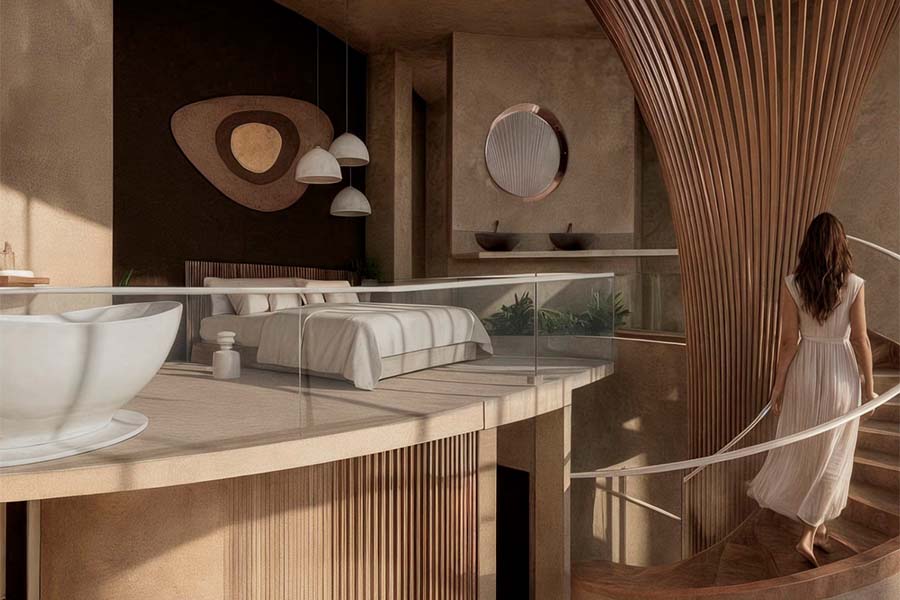Duna Sagra, a semi-buried hotel project that integrates sustainable architecture and Comcaac culture, is a finalist in the international Radical Innovation competition.
Radical Innovation is an international competition held in New York and organized by The Hardy Group, which showcases innovative ideas in design, architecture, and hospitality.
Gabriel San Román, Ignacio Ortuño, Sara Osorio, and Paola Colin are the team of Tec Toluca graduates who will present their vision of a hotel that blurs the lines between architecture and nature in New York.
“It consists of a 25,000 m² ‘invisible hotel’ that integrates harmoniously with the desert landscape and the native Seri community (Comcaac culture),” said Gabriel.
Duna Sagra, a semi-buried hotel project designed for the dunes of San Nicolás, Sonora, has been selected as a finalist in the Global Radical Innovation competition, ranking among 100 international competitors.
The winning project will be announced at the awards ceremony in New York on October 23.
This team will compete for prizes including 5,000 dollars, paid travel, and opportunities at universities in Chicago, New York, and Nevada. Public voting began last Tuesday.
UA hotel that has always been there
According to Gabriel, the architectural proposal stands out for its completely underground main floor, which uses traditional construction methods such as pointed arches and lunar vaults to create areas reminiscent of the interior of a dune.
“A 35-meter oculus, located in the center of the hotel, collects rainwater and solar power, as well as providing fresh air and natural light.
The goal is to build a hotel that respects the local community and the environment, belongs to the landscape rather than changes it, and creates the impression that it has always been there,” he said.
“The goal is a hotel that respects the local community and the environment.”
The semi-buried rooms are connected via underground lounges and pathways, in contrast to the organic roofs, which replicate the shape and color of natural dunes, Gabriel explained.
According to the team, the design features two essential amenities that go beyond the conventional idea of a hotel: a semi-buried amphitheater, conceived as a public space for art and culture, and a market pier, created to function as the hub of the local economy.

This hotel will be built on a smaller dune with rock deposits, avoiding ecologically vulnerable areas.
“The pier and amphitheater decks absorb rainwater and solar power, strengthening the project’s sustainability.
“Our hotel transcends the typical concept of a ‘luxury getaway’ by offering a distinct sensory experience,” he said.
On the way to New York
For the team, the journey to New York has been challenging, as they modeled complex structures, organic shapes, and designed for extreme weather.
“After the project was presented at the end of semester exhibition, the team submitted it to the competition with a video and a presentation. One month later, we were informed that we were finalists from among around 100 competitors from around the world.
“At first, we saw it as a dream, and now it’s something concrete that we achieved because we didn’t give up on the project until the end,” Gabriel concluded.
ALSO READ:





